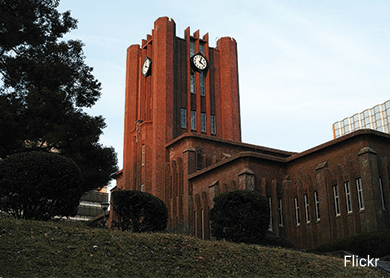

THE’s Asia university rankings sees Singapore’s National University of Singapore (NUS) maintaining its second place and Nanyang Technological University (NTU) rising to 10th place.
Topping the list is Japan’s University of Tokyo, while University of Hong Kong is at third place, followed by China’s Peking University and Tsinghua University.
Thailand has two universities in this year’s top 100: King Mongkut’s University of Technology Thonburi at 55th place and Mahidol University at 91st.
Countries like Turkey, Israel, Saudi Arabia and Iran also show improvements.
In contrast, Malaysia has so far featured just once in THE’s annual Asia University Rankings: Universiti Kebangsaan Malaysia (UKM) came in at 87th place when the ranking debuted in 2013.
THE representative Fran Langdon told The Malaysian Insider yesterday that local universities had “poor global visibility”.
“In the case of Malaysia, it really is a case of ‘you have to be in it to win it’ and unless we see more participation from Malaysia as a whole, I do not anticipate its universities making the tables in the near future – they are suffering from poor global visibility for one.”
But she was unable to reveal which Malaysian universities had submitted data to be ranked, saying THE only disclosed the names of those that made the top 100.
Previously, THE editor Phil Baty told The Malaysian Insider that local universities’ refusal to submit data to be ranked, as well as weak research, are two reasons they fared badly in THE’s rankings.
In an immediate response, DAP’s MP in charge of education, Zairil Khir Johari, said Malaysia could not be afraid to compete with the world if it wished to be world class.
“A few weeks back, Second Education Minister Datuk Seri Idris Jusoh once again repeated his claim that Malaysian universities could become world class at their current rate of progress,” he told The Malaysian Insider yesterday.
 “Unfortunately, such a claim is nothing but a pipe dream when it cannot be backed up by empirical statistics. The only way to prove that Malaysian universities are progressing is through competitive international assessments such as the THE, QS, Thomson Reuters and other world rankings.”
“Unfortunately, such a claim is nothing but a pipe dream when it cannot be backed up by empirical statistics. The only way to prove that Malaysian universities are progressing is through competitive international assessments such as the THE, QS, Thomson Reuters and other world rankings.”
He said the government was wrong to point to Malaysia’s performance in the QS rankings as proof it was doing well, since world-class universities did well across the board in all rankings, rather than a select few.
Yesterday, QS revealed that UM broke into its Asia’s top 30 rankings, while Malaysian universities across the board improved their rankings in its latest evaluation for 2015.
But Zairil said in the Centre for World University Rankings, UM only managed to place 492nd in the world, while it ranked 423rd in the Thomson Reuters Best Global Universities Rankings.
“Unfortunately, cherry-picking is disingenuous,” he said.
Baty had in the past similarly cautioned Malaysia not to rely solely on rankings that put them in a good light, while QS said its ranking should not be used as the only measure of quality of Malaysian institutions.
On May 21, Idris acknowledged the need to participate in THE’s rankings, but did not mention any deadline.
“We are aware that the QS ranking isn’t the only ranking out there. But we must begin with the QS rankings. For instance, children start out by riding ponies before they ride horses,” Idris had said.
He had also told the Dewan Rakyat that last year’s SCimago Journal and Country Rank revealed Malaysia had published more journals than Singapore in 2013.
But Zairil (pic) said Idris was again being “selective” about facts, adding that Malaysia had 63 institutions of higher learning, while Singapore only had 32.
“As such, number of publications is a terrible indicator as we should technically be doubling Singapore's output. A more nuanced assessment should be based on the impact and quality of research, such as the Thomson ISI Index for scientific articles and other impact assessments.
“For example, NTU in Singapore placed first in Asia in terms of quality and impact of research, based on research by Thomson Reuters and Elsevier. Being only 23 years old, this is a great achievement as it has outperformed universities from Hong Kong, Korea and Japan.”
Zairil said Asia was projected to be the next “global higher education superpower” as a result of vast improvements in many Asian universities, but Malaysia appeared to be left out of the Asian education renaissance.
“Besides China, other countries that have done well are Japan, though its dominance is now increasingly threatened by newcomers, South Korea and Taiwan.
“Hong Kong, for example, has seen all six of its universities ranked in the top 50 now, an improvement from last year. Even Macau has entered the rankings with the University of Macau at joint 40th place.” – June 11, 2015.
